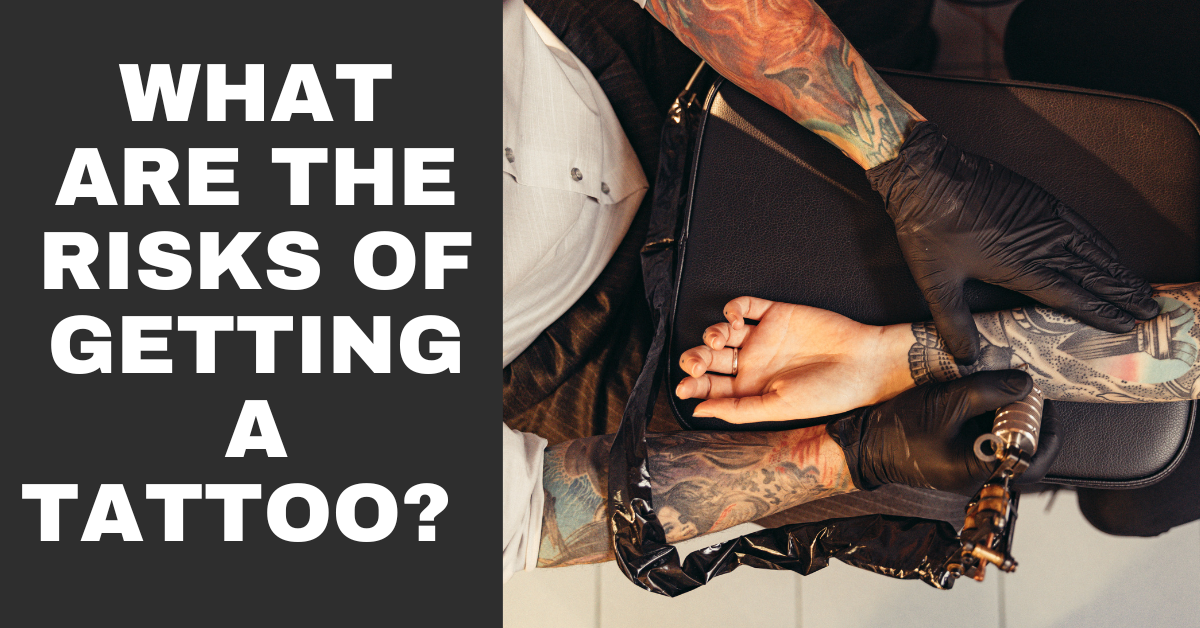Risks of getting a tattoo
Traditionally, the tattoo was done by hand; they were pricked by the needle on the skin. But today they are done with an electric tool. The mechanism of the tool that is used today works a lot like a sewing machine. The needle goes in and out of the ink into each hole. As the needle goes into the skin, some bleeding is accompanied by sharp pain.
The pain may be mild for a few, like tingling or it may also be severe, resembling an effect of being stung by a bee many times and it depends on how the person is receiving the pain. The tattoo artist’s skill also matters when it comes to the amount of pain a person goes through.
What are the risks of getting a tattoo?
Some of the possible complications encountered after getting a tattoo include:
- Skin infection
- Allergic reactions to the ink may lead to side effects like redness, swelling, and itching.
- Skin abnormalities, such as bumps and scars over the tattoo
- Aggravation or worsening of existing skin conditions such as Dermatitis, Eczema, if present
- Infectious diseases like Tetanus, HIV, and Hepatitis are possible if the place and needles are not sterilized
- The design may stretch or change appearance as a person gets older
Tips for Safe Tattoo and Piercings
You can lower the chance of health complications caused by a tattoo or piercing by taking a few simple precautions.
- Get a tattoo from a licensed, reputable facility. Tattoo regulations and requirements vary by state, so check with your local Department of health for the latest safety.
- Check to make sure your artist uses a fresh pair of gloves and washes their hands before starting the procedure.
- Make sure you observe your artist removing needles from a new, sealed package. Needles and razors shouldn’t be reused.
- The area of skin being tattooed should be swabbed with a disinfectant, prior to tattooing.
- Fresh tattoos should be covered with sterile gauze or a bandage. Follow the artist’s instructions for caring for newly tattooed skin.
Tattoo aftercare advice to prevent skin infections
Some aftercare advice is as follows:
- Always wash hands well before touching or cleaning the tattooed area
- Do keep the area clean and dry
- Do wash the tattoo with clean water and a bar of mild liquid soap
- Rinse and pat dry with a clean paper towel
- Do use a cream suggested by the tattoo artist and apply it when the skin becomes dry
- Get enough sleep and stick to a strict nutritious diet because only a healthy lifestyle will heal the tattoo sooner
- Do not rub or scratch the tattoo as it may lead to infection and delay the healing
- Do not get in contact with water or swim until the tattoo is healed
- Do not expose the tattoo to direct sunlight while it has not healed completely
- Apply sunscreen to prevent it from fading
- Do not wear skin-hugging or unclean clothes
- After some days, there will be peeling and possibly a little scabbing around the tattoo, and this condition is normal – need not panic!
- Never get a tattoo if you are feeling sick. Being unwell may also slow the healing process and increase the risk of skin infections
- In case you are on medication or have any pre-existing medical problems such as skin disorders, allergies a condition that affects your immune system or if you are pregnant – seek a doctor’s advice on getting a tattoo. Check for any special precautions you need to take before getting a tattoo.
Removing Tattoo or Piercings
Tattoos can be erased, but not always completely or with satisfying cosmetic results. The process requires repeated visits to a doctor. Scarring is also likely. The FDA recommends laser surgery, performed by a dermatologist as a safe tattoo removal technique. Consult your doctor if you’re thinking about having a tattoo removed. The reversal of a piercing is usually as simple as removing the jewelry and allowing the hole in the skin to heal. Punctured cartilage, stretched skin, and other body modifications may require surgical correction.Conclusion
Having discussed the possible dos and don’ts and several possible skin infections, we would say think before you ink. It is a permanent affair, and removing it is a painstaking process, certainly involving several sittings and considerable expense. Remember that complete removal of it without scarring may be impossible in some cases.
DISCLAIMER
THIS BLOG/WEBSITE DOES NOT PROVIDE MEDICAL ADVICE
The Information including but not limited to text, graphics, images and other material contained in this blog is intended for education and awareness only. No material on this blog is intended to be a substitute for professional medical help including diagnosis or treatment. It is always advisable to consult a medical professional before relying on the content.



